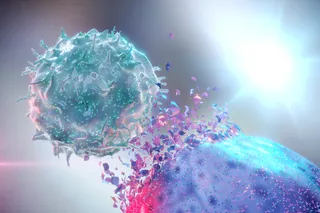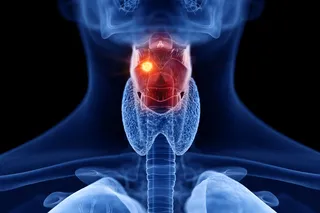The naked mole rat is a species with a long list of peculiarities. The mole rat is about the same size as the more hirsute wild mouse, but lives seven times as long, sometimes reaching the ripe old age of 28. The creatures almost never poke their noses beyond the snug confines of their burrows and tunnels, and instead live out their lives underground in the dark. They're also the only mammals who have a social structure that resembles an ants’ nest or beehive, where only one dominant female mates and reproduces. Finally--and this is the part that most interests researchers--naked mole rats never get cancer. A new study in the Proceedings of the National Academy of Sciences probed the mole rats' robust good health, and determined how they beat cancer.
The naked mole rat's cells hate to be crowded, it turns out, so they stop growing before they can ...













